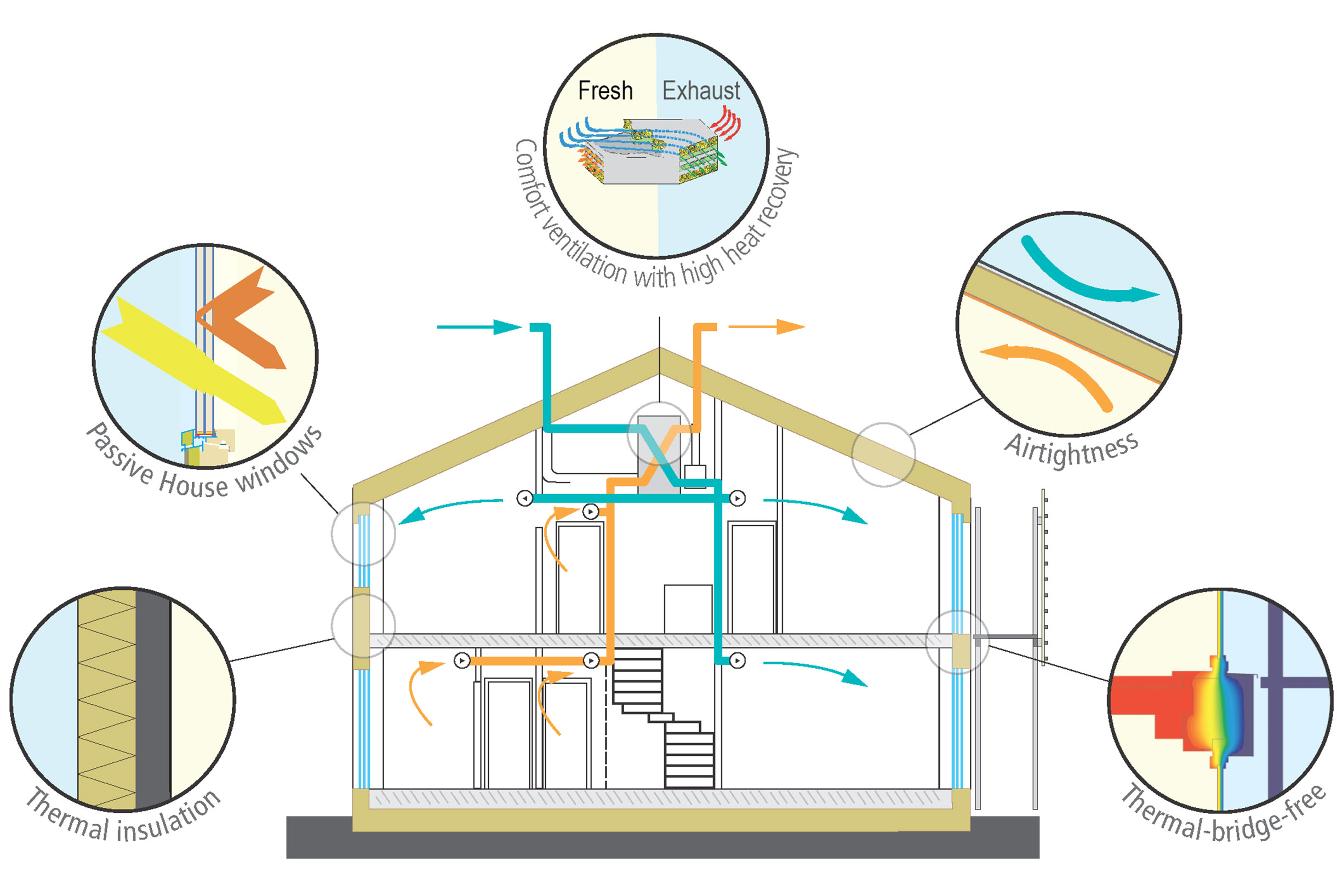Passive House is the Future
2015.02.18

Circular has committed to Passive House principles for all our projects
As architects we necessarily work at the intersection of art, engineering and commerce. It is in the embrace, negotiation and ultimate surmounting of constraints that our creativity is best kindled and directed.
It’s not often that we see the primary forces that influence our work realign to point so clearly at a more advanced way of thinking about the world and our ability to change it for the better, but we’re convinced that this is one of those moments.
The studio’s recent adoption of Passive House principles represents an evolution of our architectural design paradigm, extending our concern for modular and systems-based design to encompass quantifiable energy efficiency, carbon reduction and occupant comfort.
So what is Passive House and why is it such a game-changer?
In short, it’s a set of design principles and efficiency standards that strictly regulate the amount of energy a building can use, and when implemented correctly, guarantees a very high level comfort for the people inside.
Passive House building principles can be applied to all building typologies, from single-family homes to apartment buildings, schools, commercial spaces and skyscrapers. At first glance, many of these projects will not be distinguishable from conventional buildings to the casual observer.
The basic strategy combines high performance building components like doors and windows with a thick airtight insulation layer, continuous mechanical ventilation for fresh filtered air, and energy and moisture recovery.
In late 2014, New York Mayor Bill de Blasio released his “One City Built to Last” ten-year plan, which commits to reducing emission by 80 percent below 2005 levels by 2050. The report states that the energy used by buildings accounts for at least 75% of citywide emissions, and proposes implementing “leading edge” performance standards for new construction that “cost effectively achieve highly efficient buildings,” specifically identifying Passive House as a model for the new standards.
So what benefits will I see and what is it going to cost me?
Passive House relies on higher quality components and construction methodologies to achieve its standards, which allow only 4.75 kBTU of power per square foot per year, representing about 75% less overall energy usage than a typical building.
The better build quality ensures a very long lifecycle in which to enjoy the benefits, but nevertheless the cost premium is generally only a 0-10% increase from a conventional budget and is quickly recouped.
Beyond significantly reduced energy costs, Passive House projects are extremely resilient in emergency power outages, have much better indoor air quality and maintain very consistent temperature levels all year long.
So why isn’t everyone doing it?
Passive House represents a challenge to the entrenched home building industries, which have relied for too long on a “rough” vs “trim” construction paradigm. In the traditional model, successive layers of sloppy infrastructure and framing are hidden from view by a finished “trim” layer of plasterboard and molding.
Since the occupant never sees what’s concealed in the exterior walls, there hasn’t been much incentive to spend the extra time and effort to ensure that “thermal bridges” are avoided and a continuous air barrier is maintained. Worried about drafts in a conventional building? Just stick a big radiator under the window and crank it up.
Climate change demands that we approach the engineering and construction of our homes and offices with the same degree of precision and efficiency that we would expect of our battery-sipping iPads or regenerative-braking hybrid cars. The only way to get these systems to perform is to carefully consider each component individually, and analyze and model its relationship with every other part and assembly in the overall design.
Certified Passive House Designers
In order to make it all work, a building must be designed and engineered as a balanced holistic system, incorporating sophisticated technical analysis and an in-depth understanding of materials, components and construction methodologies, to ensure continued performance over an extended lifecycle.
This way of thinking about buildings has already been embraced in Europe, where energy costs have historically been much higher and building codes have progressed quickly to adapt to the research findings. There are literally thousands of Passive House projects built over the past decades that demonstrate that the system works extremely well.
As Certified Passive House Designers, we are uniquely positioned to oversee every step of the design, engineering, specifications and construction of a new Passive House building or renovation project. Careful planning in the early stages and diligent monitoring and oversight throughout the construction process are crucial to achieving the intended performance.
In future posts I’ll discuss how we’re integrating Passive House principles into current commercial and residential projects. Let us know if you have questions or would like to discuss how we can help out with your specific needs.


